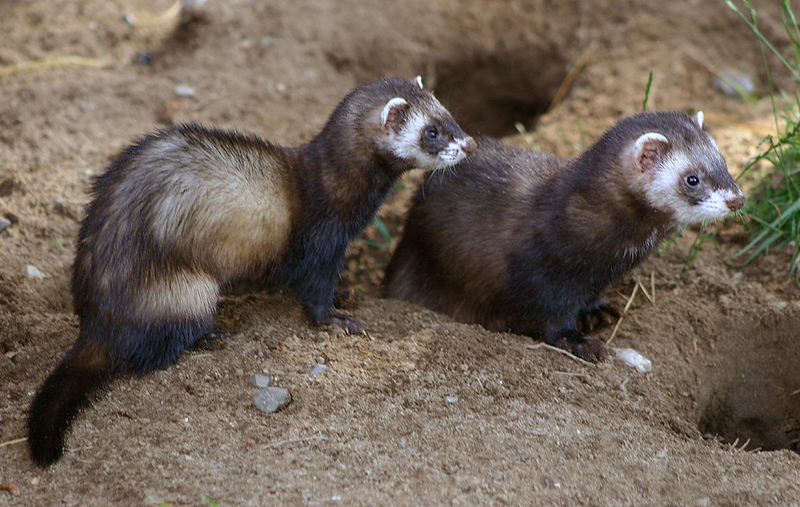|
| 질의: european otter | 결과: 34번째/50 | |
European Polecat (Mustela putorius) - Wiki
| 제목: | European Polecat (Mustela putorius) - Wiki
| |

| 해상도: 1000x634
파일크기: 733076 Bytes
촬영일: 2005:07:31 09:58:31
사진기: Canon EOS DIGITAL REBEL (Canon)
F number: f/4.5
Exposure: 1/125 sec
Focal Length: 135/1
등록시간: 2007:10:23 10:55:02
|
European Polecat
From Wikipedia, the free encyclopedia
[Photo] European Polecats (Mustela putorius) at Skandinavisk Dyrepark, Djursland, Denmark (Da: Ildere (Mustela putorius) fra Skandinavisk Dyrepark, Djursland, Danmark). Date: 31. juli 2005. Please credit: Malene Thyssen, http://commons.wikimedia.org/wiki/User:Malene Copyright (C) 2005, Malene Thyssen
Permission is granted to copy, distribute and/or modify this document under the terms of the GNU Free Documentation License, Version 1.2 or any later version published by the Free Software Foundation; with no Invariant Sections, no Front-Cover Texts, and no Back-Cover Texts. A copy of the license is included in the section entitled "GNU Free Documentation License". |
The European Polecat (Mustela putorius), also known as a fitch, is a member of the Mustelidae family, and is related to the stoats, otters, weasels, and minks. They are dark brown with a lighter bandit-like mask across the face, pale yellow underbody fur, a long tail and short legs. They are somewhat larger than weasels, weighing between 0.7 kg for females to 1.7 kg for males, but smaller than otters.
Polecats live in most of the countries of Europe. They are mainly nocturnal and usually found in woodlands, farmlands, and wetlands. They often make dens in stream banks or under tree roots. Mainly carnivorous, they feed largely on frogs and voles, but will also catch rats and other small prey. They require a home range of about a square kilometer. The pattern of polecat predation on frogs was found to be sex selective and predation by polecats is found to influence sex ratio, male abundance and sexual conflict in a frog mating system, restricting the opportunity for multiple mating (see Thierry Lod??). Polecats (mainly dark phenotype) are able to hybridize with the rare European mink and have fertile hybrids (see Lod?? Thierry, Journal of Heredity). In some parts of England, the abandoning of domestic ferrets has led to ferret-polecat hybrids living in the wild that are almost indistinguishable from pure polecats. Although Polecats were chiefly polygynous, but females could show polyandry and, related to sexual conflict, the mating system could change with environmental conditions. Note that sexual conflict may result into sexually antagonistic co-evolution, in which one sex evolves a "manipulative" character which is countered by a "resistance" trait in the other sex. Deliberate homosexuality was also observed (Thierry Lod??) in wild polecats.
Other species of polecat include the Steppe Polecat (M. eversmanni) and the European Mink (M. lutreola). Most zoologists believe that the domestic ferret (M. putorius furo) is descended from the European Polecat, or possibly from a hybrid of the European and steppe varieties. The Zorilla, also called the striped polecat (Ictonyx striatus), lives in subsaharan Africa.
http://en.wikipedia.org/wiki/European_Polecat
| The text in this page is based on the copyrighted Wikipedia article shown in above URL. It is used under the GNU Free Documentation License. You may redistribute it, verbatim or modified, providing that you comply with the terms of the GFDL. |
|
^o^
동물그림창고 똑똑전화 누리집
^o^
|
|

